What is the NBA Drug Policy?
Over the last 30 years, the NBA as a league has evolved. The short shorts have gotten longer, the style of play has become less physical, even control of the players and their destiny has shifted from the hands of the owners to the individual star players in some instances. So when looking at the NBA in the context of weed; how has this league evolved? Are NBA players allowed to smoke? Where does the NBA stand now on cannabis? What is the NBA drug policy and what does the future look like for the league and marijuana?
In the early 1990’s former NBA player Richard Dumas stated that if the league ever tested players for marijuana, “there wouldn’t be no NBA.” He was basically implying that NBA stoners were prevalent at the time. It should be noted that in 1992 Dumas was suspended his rookie year for violating the NBA substance abuse policy and subsequently banned for the duration of his career after testing positive for a banned substance again and failing to go to rehab (so maybe we take what he says with a grain of salt). While we don’t know which drugs Dumas used to violate the policy, and get himself banned, we do know that league did not suspend him for marijuana use. We know this because the NBA did not begin testing for weed until the 2000 season.
Former NBA Commissioner David Stern not only heard Richard Dumas’ comments but he was also worried about the image of his league. During the 1990’s there were players like Damon Stoudamire, Gary Patton, Rasheed Wallace, Allen Iverson, and even Robert Parish aka “The Chief”, who were all known for smoking pot. Stern admitted to wanting to clean up the image of the league using player health and safety as the reasoning for marijuana testing.
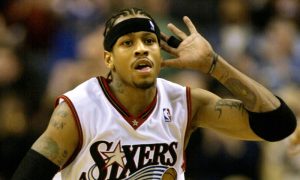 Allen Iverson was a Proponent of Marijuana while in the NBA
Allen Iverson was a Proponent of Marijuana while in the NBA
With the league entering the 2000’s with a new policy, they found that less than three percent of players were actually using marijuana. Of the 430 players, only 12 tested positive. The “punishment” for those players at the time was to enter what the NBA labeled as an “aftercare” program. While some could argue that players knew in advance that they were going to be tested, the league was admittedly happy with the low percentage of players using the drug and felt that their policy on marijuana worked.
Fast forward eighteen years and the NBA drug policy is now technically reached the age of maturity. In the general public there is less of a stigma around the usage of cannabis. Thirty states have legalized weed in some shape or form, and there is research to suggest there are multiple healthy applications for the plant.
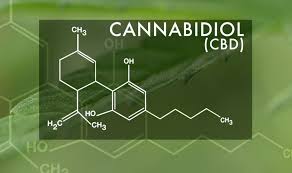 The league has a new commissioner who is more progressive than his predecessor, and the NBA Players Association is stronger than it has ever been. Does all this mean that the NBA is leading the charge on marijuana and ready to present a progressive policy for players that use weed?
The league has a new commissioner who is more progressive than his predecessor, and the NBA Players Association is stronger than it has ever been. Does all this mean that the NBA is leading the charge on marijuana and ready to present a progressive policy for players that use weed?
Currently the NBA has a lower threshold for THC than the NFL does. The NFL will allow for a sample to have up to 35 ng/ml where the NBA will only allow up to 15 ng/ml to record a positive test. On the surface this seems as if the NFL is actually more lenient than the NBA, but when looking at the number of suspended players and the actual policies, we see a different story.
The NFL suspended six players during the 2017/2018 NFL season, while the NBA suspended two players for marijuana related violations of the substance abuse policy. The policy requires a player to enter the Marijuana Program. A second violation results in a $25,000 fine and the player must re-enter the Marijuana Program. The third marijuana related violation results in a five-game suspension and the player’s re-entry into the NBA’s Marijuana Program. A fourth (or any subsequent) violation involving marijuana will result in a suspension that is five games longer than the player’s immediately preceding suspension.
Some key takeaways from the policy are when the actual “punishment” kicks in, and it’s overall simplicity. Under the policy the player does not receive a suspension until the third violation of the policy and the suspension is for five games. Also for the second offense the player would only pay a $25,000 fine. I am aware that the average person reading this does not have $25,000 laying around to pay fines, but in a league where the average salary is nearly $6 million and the median salary is $2 million, the fine is a small percentage of most player’s salaries in the league. Going back to the five game suspension, remember the NBA season is 82 games, therefore a five game suspension is the equivalent to 6% of the season. Compared to the NFL, the NBA’s 6%, 5-game suspension relative to the NFL’s 25%, 4-game suspension does not seem so bad. One more item of note about the NBA’s marijuana policy, they do not test during the off season. The NFL guarantees at least one test anytime, anywhere, and if you miss it, it’s an automatic fail.
While the NBA has a more narrow range of when players can be tested, and the punishments are less severe than the NFL, they still have these policies and the substance is still banned. David Stern, former league commissioner, the same who was responsible for instituting the testing policy back in 2000 has gone on record saying marijuana should be removed from the band substance list in the NBA.
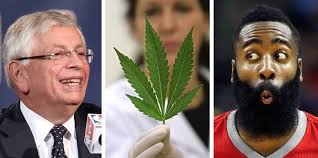 David Stern James Harden Cannabis Proponents
David Stern James Harden Cannabis Proponents
Stern stated he watched a documentary on cannabis which convinced him that there were multiple positive uses for the plant and it’s use should not be restricted. This is a change in heart the public rarely sees from a person of David Stern’s stature especially on a taboo issue like weed.
Even with the urging of the former commissioner, the current commissioner, Adam Silver, has no plans on removing marijuana from the banned substance list, but has an open mind about the possibility of it happening in the future.
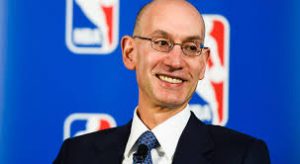 NBA Commissioner Adam Silver
NBA Commissioner Adam Silver
Silver was quoted, “My personal view is that it should be regulated in the same way that other medications are if the plan is to use it for pain management.” It’s not free range use, but it is a move in the right direction.
Adam Silver is not the only current league official that has a hopeful view on cannabis coming off the banned substance list. The executive director of the Players Association, Michelle Roberts, is on record being supportive of marijuana research as it applies to player health. In an interview last year Roberts stated that in her view “there are substantial signs that support its efficacy and the value that it has for us, especially pain management.” She went on to say that the players association is in talks with the league to see what direction they will go.
While the executive director’s statements aren’t exactly her beating down the door of the commissioner to boot weed from the banned list, she has reasoning to her subtle approach. Her responsibility is to protect the players in all aspects of their interactions as NBA players. In light of the current Attorney General, Jeff Sessions, and his objectionable stance towards marijuana, she’s worried about the risk of players being targeted and “arrested for possession of a cannabinoid by some fed. It’s against the law.”
Like the NFL, the issue with the NBA drug policy comes back to the legality of marijuana and the wall between players having access to the potential health benefits and the continued punishment and fines for testing positive. While there is a myth that the NBA has a medical use exemption, this is not accurate or true. Michelle Roberts has stated that it is something being reviewed, but in her own words “we’re not there yet.”
While the NBA does not possess the same type of physicality seen in the NFL, the players bodies do take considerable punishment. The average NBA player is 6’6″ and weighs 220 plus pounds, combine that with constant movement and running up and down the court, jostling for position, and watch the damage pile up.
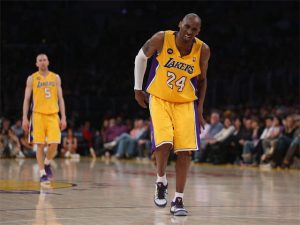 Kobe Bryant Achilles
Kobe Bryant Achilles
Players blow out their ACL, tear their achilles, and dislocate their ankles. They suffer concussions, torn labrums, and other broken bones. Let’s not forget they play 82 games over the course of the season. The NBA season begins in the fall in October and ends in the summer in June, they cover all the seasons!
The NBA season is a battle of endurance and attrition and with the money on the line, players play with injuries. With a season so long and demanding, the players require some form of pain management. The NBA, like the NFL prescribes opioids to help players deal with pain for serious injuries. It is no secret that drugs like Vicodin, Percocet, Oxycotin have serious side effects from allergic reactions, rashes, stomach pain, to addiction.
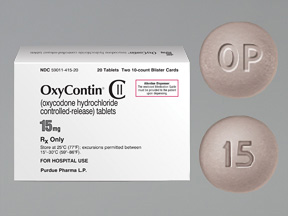 The combination of a long season, various injuries, the willingness and sometimes perceived need to play at all costs, has lead some players down a dangerous path when being consistently prescribed opioids to manage the pain.
The combination of a long season, various injuries, the willingness and sometimes perceived need to play at all costs, has lead some players down a dangerous path when being consistently prescribed opioids to manage the pain.
There is research that reflects cannabis as a possible safer alternative to opioids especially for athletes. Data suggests that cannabis can reduce chronic pain, help with muscle spasms, relieve arthritis discomfort, and decrease anxiety all of which could be beneficial to basketball players that run on a hardwood floor for hours a day nearly year round.
The NBA and NBA Players Association say that they are working on and looking into the benefits of cannabis. They have not articulated what a policy would look like with weed removed from the banned list or how a regulated use of cannabis program would work. As the landscape shifts towards legalization in each individual state, and possibly federal legalization, the NBA will have an opportunity to help players in the league manage their health and their pain with an alternative with fewer side effects and less addictive properties.
Facebook Comments
Tags
Adam Silvercannabisdavid sternNBANBA drug policyweed


